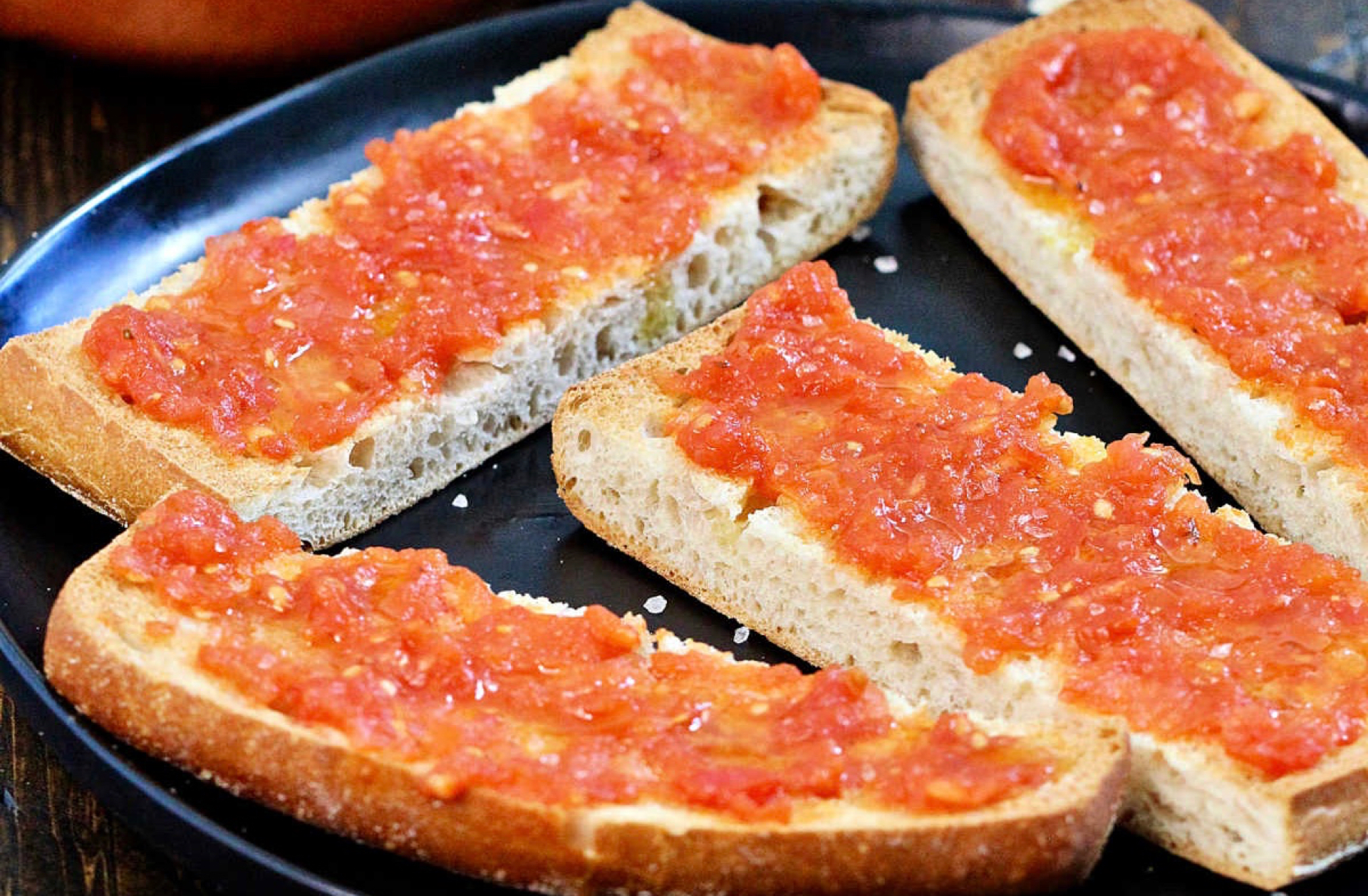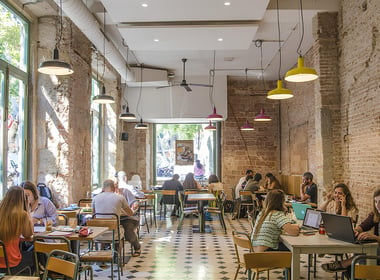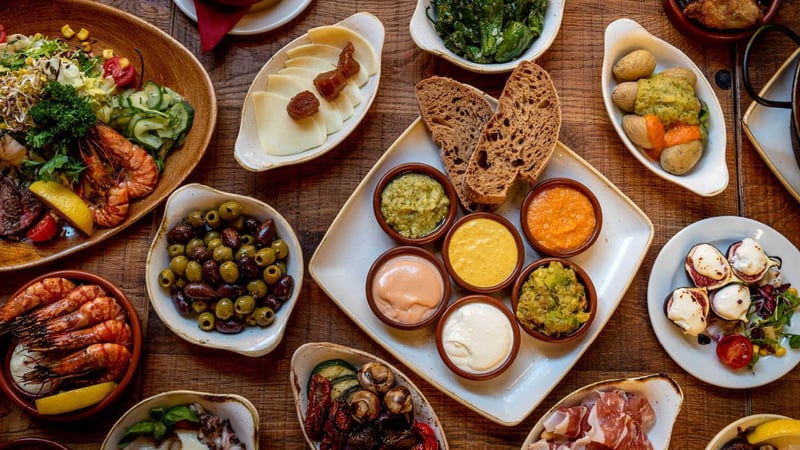İçindekiler
Having lived in Barcelona for a year, one of the most common questions I get is “What should we eat in Barcelona?” Catalan cuisine has recipes different from other regions of Spain and its own unique food culture. In this article, I’ll try to explain the local dishes you should try when you come to Barcelona, restaurants where you can eat well, and how to avoid well-known tourist traps.
Classic flavors that come to mind when thinking of Spain, like paella, tapas, and sangria, are interpreted a bit differently here. Unfortunately, most restaurants in tourist areas are low quality and expensive. That’s why I’ll share in detail where to eat what and which restaurants should be preferred.
Basics of Catalan Cuisine
To be honest, Catalan cuisine confused me at first too. They say it’s different from Spanish cuisine, but how different? Its most distinctive feature is combining sweet and savory flavors. For example, they use fruit sauces in meat dishes. It might seem strange at first, but some combinations are really good.
Being a Mediterranean country, seafood naturally plays an important role in the cuisine. You can clearly see this at La Boqueria, but I wouldn’t recommend eating there as prices are adjusted for tourists. The market is ideal for seeing the ingredients and learning what’s in season when.
Tapas Culture and Pan con Tomate
The tapas culture works a bit differently here. There’s something called “vermouth hour” between 18:00-21:00. People go to tapas bars after work to grab some snacks. They generally recommend making reservations, but this applies to restaurants – if you go to Bormuth, you might wait a bit or get seated right away.
Pa amb tomàquet (Pan con Tomate), or bread rubbed with tomato, will appear everywhere. It’s actually quite simple: they rub garlic on toasted bread, smash tomato on top, and drizzle olive oil. It tastes good, but honestly, it’s not as special as people make it out to be.

The Best Tapas Varieties
Patatas bravas, french fries topped with spicy sauce, is available at every tapas bar, but most places use pre-made sauce. The best I’ve had was at Bubar. Bombas (potato croquettes) and croquetas (croquettes) are also popular, but my favorites are patatas bravas and pimientos de padrón – fried green peppers. Some turn out spicy, so it’s best to eat them carefully.
Best Paella Places in Barcelona
Frankly, it is hard to find good paella in Barcelona, most restaurants serve poor quality paella aimed at tourists. However, after a long search, I discovered a few good places.

1. Can Fisher is located on the Poblenou beach and makes one of the best paellas in the city. Prices are a bit high but at least you get your money’s worth – especially their seafood paella is my favorite. It’s best to make a reservation.
Address: Av. del Litoral, 64, Sant Martí, 08005 Barcelona
2. Cruix is located in Eixample, away from tourist areas. This allows for a more authentic experience. They offer experimental versions alongside classic paella. Better value for money compared to Can Fisher.
Address: Carrer d’Entença, 57, L’Eixample, 08015 Barcelona
3. Cheriff in Barceloneta is a place preferred by locals too. The menu includes not just paella but other rice dishes as well. Being by the sea, they use fresh seafood. Gets very crowded on weekends.
Address: Carrer de Ginebra, 15, Ciutat Vella, 08003 Barcelona
4. Despite being in Barceloneta and a tourist area, Maná 75 doesn’t compromise on quality. However, prices are a bit steep due to its location. Nice view but don’t go just for the view.
Address: Pg. de Joan de Borbó, 101, Ciutat Vella, 08039 Barcelona
5. L’Arosseria Xátiva has several branches in the city, making authentic Valencian-style paella. You might prefer their Les Corts branch, as others are a bit touristy. Prices are reasonable and portions are filling.
Address: Carrer de Bordeus, 35, Les Corts, 08029 Barcelona
Reservations are required at all these restaurants, and I recommend calling at least a day ahead especially for dinner. Paella is prepared for minimum two people and takes about 30-40 minutes to prepare, keep this in mind when ordering.
Historical Restaurants and Neighborhood Restaurants
There are historic restaurants like Can Culleretes (1786) and 7 Portes (1836), but honestly, they’re not very satisfying in terms of value for money. I can put Els Quatre Gats, which is highly recommended to tourists as a “must-visit,” in the same category. The historic atmosphere is nice but the food is mediocre and expensive, though you might feel the complete opposite. You don’t have to eat everything – I’d say go and experience it.
My recommendation is to head to small restaurants in residential neighborhoods. Family-run restaurants especially in Gràcia and Sant Antoni are both more affordable and tastier. Cal Pep and Bar Cañete are among my favorites. But note, reservations are essential at these places too.
Menú del Día (Menu of the Day)
The most logical choice for lunch is the “menú del día”. For prices ranging between 12-16 euros, you can get a 3-course meal with drinks (these numbers may vary depending on the venue). It’s available at almost every restaurant and locals generally prefer these menus too. For the best menú del día, you can try Bar del Pla and Elisabets.
Street Foods and Snacks
Unlike Istanbul, there isn’t a rich street food culture here, but there are still some nice alternatives. Churros, for example, is a popular dessert served with hot chocolate. Granja La Pallaresa makes good churros, but there are queues on weekends.
Sandwiches called bocadillo are among the most common street foods. You can find versions with jamón (Spanish ham), tortilla (potato omelet), or cheese in many places. The bocadillos at Bo de B are both tasty and reasonably priced. Locals also prefer this place during lunch hours.
Empanada is another snack you can find. These half-moon-shaped pastries are usually filled with meat, chicken, or tuna. La Fabrica makes good empanadas and their prices are reasonable. I recommend eating them while they’re hot.

Shopping Tips
If you want to cook for yourself, prefer Santa Caterina Market. It’s not as touristy as La Boqueria and prices are more reasonable. It’s ideal especially for jamón and cheese shopping. But note, markets close early in the afternoon. Also, you can meet all your needs from supermarkets like Mercadona, Ametller Origen (Macro), Carrefour, and Dia if you can find one nearby.
As you can see in this guide, the food scene in Barcelona is a bit complicated. There are many options where you can eat well without falling into tourist traps or straining your budget. The important thing is to do some research and move away from popular tourist areas. I’ll share restaurants where you can eat Turkish food in a separate article.








